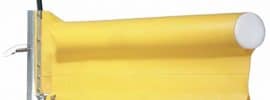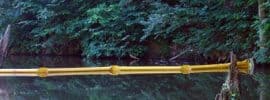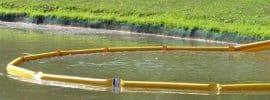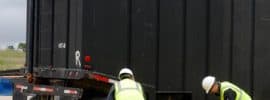Water containment booms play a crucial role in controlling water pollution and managing emergency spill responses. These barriers, commonly referred to as oil spill booms, are essential for containing and controlling the spread of oil and other hazardous substances on water surfaces. However, deploying these booms is not without its challenges. In this article, we will explore some of the key challenges faced in deploying water containment booms and discuss effective solutions to overcome them.
Understanding Water Containment Booms
Water containment booms are floating barriers designed to contain or deflect oil spills and other pollutants on water surfaces. They are used in various settings, including oceans, rivers, and lakes, to prevent the spread of contaminants and protect the environment. These booms can be deployed quickly during an emergency spill response to minimize environmental damage.
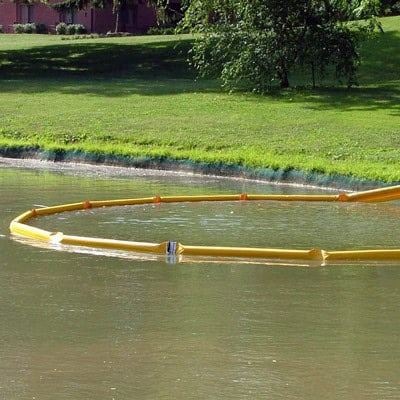
Types of Water Containment Booms
There are several types of water containment booms, each designed for specific conditions and applications. Some common types include:
- Fence Booms: Ideal for calm waters, these booms have a solid construction that helps contain spills effectively.
- Curtain Booms: Suitable for rough waters, they have a flexible skirt that extends below the water surface to capture submerged oil.
- Inflatable Booms: Easy to transport and deploy, they are inflated on-site and are versatile for various conditions.
Challenges in Deploying Water Containment Booms
Deploying water containment booms can be challenging due to various factors. Understanding these challenges is crucial for effective water pollution control and emergency spill response.
Environmental Conditions
One of the primary challenges in deploying booms is dealing with environmental conditions. Factors such as strong currents, high winds, and rough seas can complicate deployment and reduce the effectiveness of the booms. For instance, in high wind conditions, booms may not stay in place, allowing oil to escape containment.
Boom Selection and Design
Choosing the right type of boom for a specific situation is critical. A mismatch between the boom design and the environmental conditions can lead to inadequate containment. For example, using a fence boom in rough waters may result in the boom being submerged or overturned.
Deployment Speed and Logistics
During an oil spill, time is of the essence. Rapid deployment is necessary to prevent the spread of contaminants. However, logistical challenges such as transporting booms to the spill site, coordinating response teams, and setting up the booms in a timely manner can impede swift deployment.
Maintenance and Durability
Water containment booms are exposed to harsh environmental conditions, which can affect their durability. Regular maintenance is essential to ensure that the booms remain effective over time. However, conducting maintenance in remote or challenging locations can be difficult and costly.
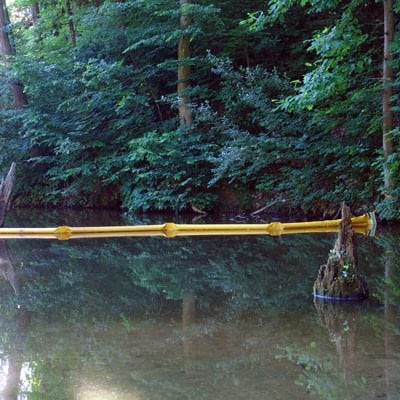
Solutions for Effective Boom Deployment
While the challenges of deploying water containment booms are significant, there are effective solutions that can enhance their deployment and performance.
Advanced Boom Technology
Innovations in boom technology have led to the development of more resilient and versatile booms. For example, advancements in materials have resulted in booms that can withstand harsh environmental conditions better. Additionally, some booms now come equipped with GPS tracking systems, allowing for real-time monitoring and adjustments during deployment.
Training and Preparedness
Proper training and preparedness are essential for effective emergency spill response. Response teams should undergo regular training exercises to familiarize themselves with boom deployment procedures. This ensures that teams can deploy booms quickly and efficiently, even under challenging conditions.
Strategic Planning and Coordination
Effective spill response requires careful planning and coordination. Having a well-defined response plan that outlines the roles and responsibilities of each team member can streamline deployment efforts. Additionally, coordinating with local authorities and environmental agencies can provide valuable resources and support during an emergency.
Regular Maintenance and Inspection
Regular maintenance and inspection of water containment booms are crucial to ensure their readiness for deployment. Conducting routine checks and repairs can extend the lifespan of the booms and prevent failures during a spill response.
Conclusion
Water containment booms are indispensable tools for controlling water pollution and managing emergency spills. While deploying these booms poses several challenges, advancements in technology, strategic planning, and effective training can enhance their performance and effectiveness. By addressing these challenges and implementing the solutions outlined, response teams can improve their ability to contain and control spills, ultimately protecting the environment from the harmful effects of pollutants.
In conclusion, understanding and overcoming the challenges associated with deploying water containment booms is essential for effective water pollution control and emergency spill response. By investing in advanced technology, training, and coordination, we can ensure that these critical tools are ready to protect our waterways when they are needed most.
Shop Absorbents Online for Water Containment Booms
For those looking to fortify their spill response strategy, consider exploring the wide range of water containment booms available at Absorbents Online. With a commitment to quality and reliability, Absorbents Online offers a selection of booms designed to meet the highest standards of performance. Equip your response team with the best tools to handle emergencies efficiently and protect our environment. Visit Absorbents Online today to explore their offerings and ensure you’re prepared for any spill situation.
